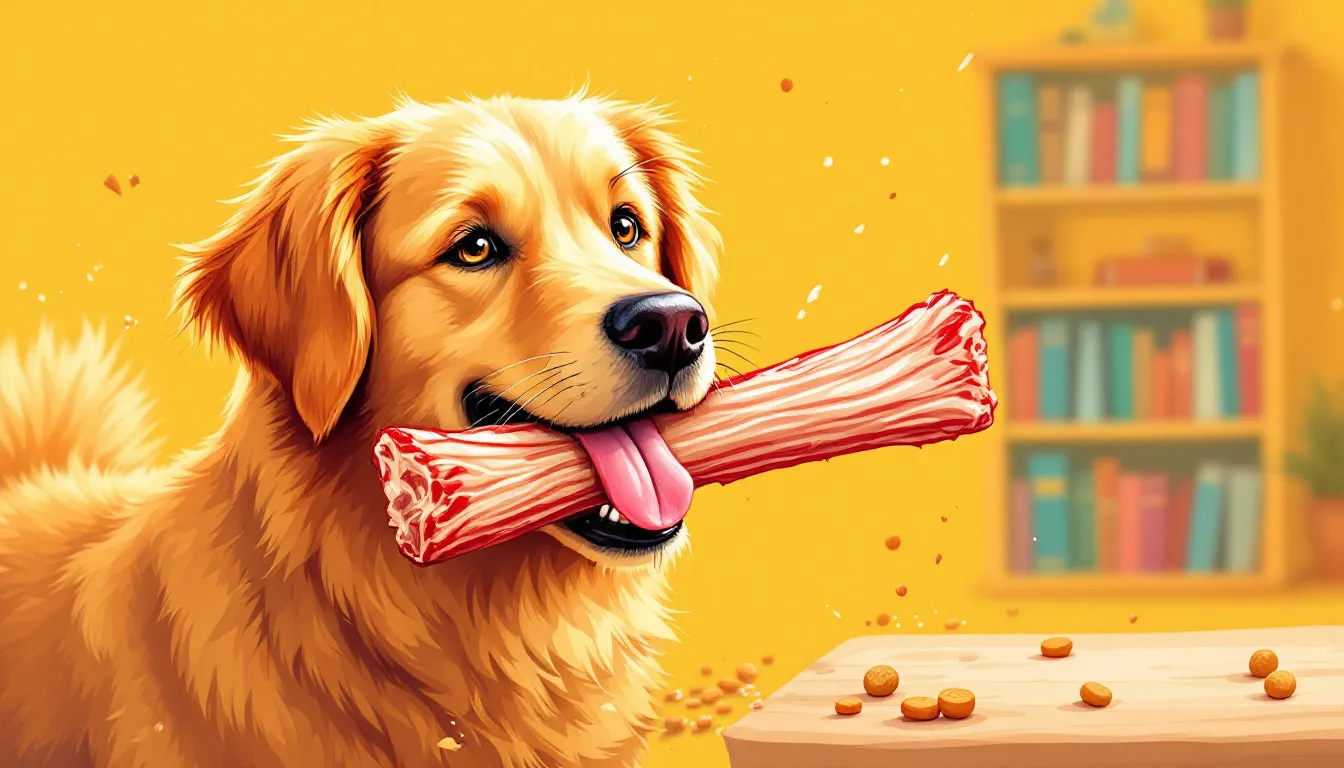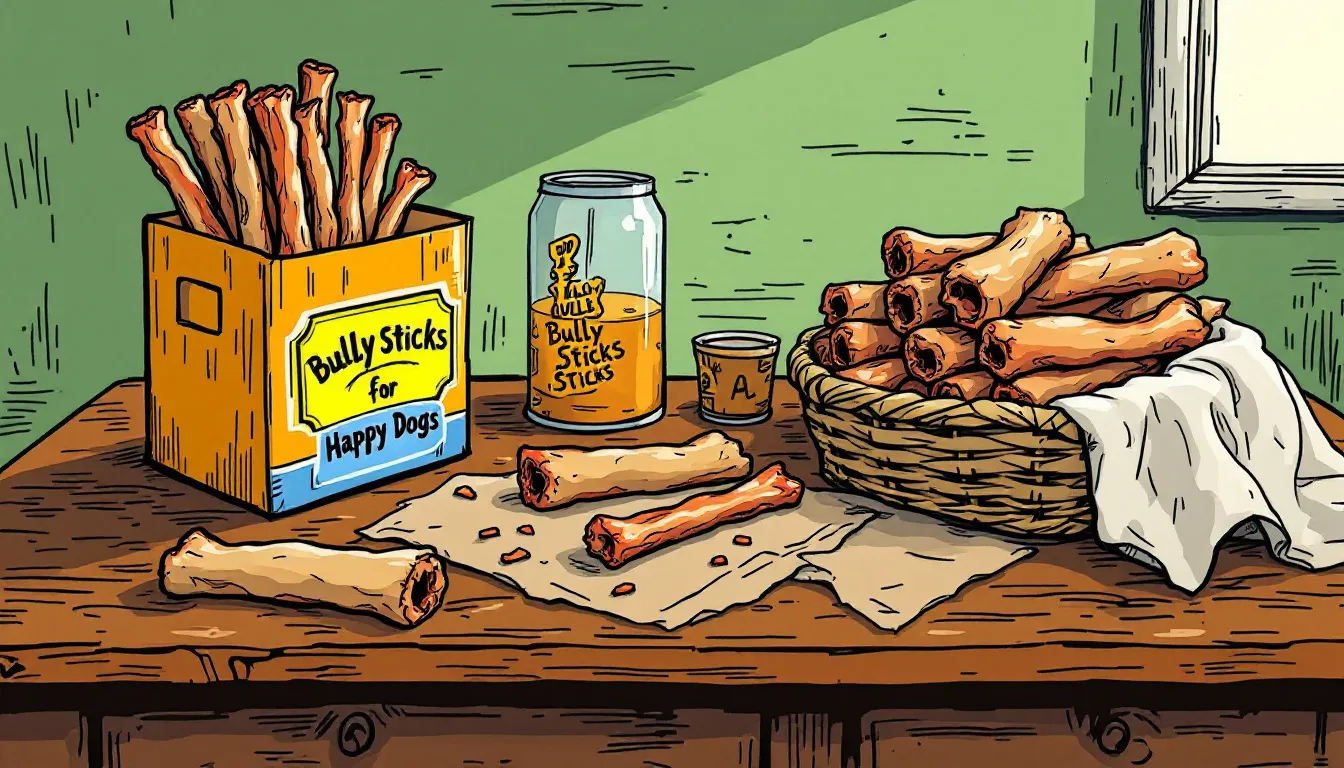What Are Bully Sticks Made From? A Comprehensive Guide for Pet Owners
Posted by Greg C. on Apr 04, 2025
What Are Bully Stick Made From? Essential Facts for Pet Owners
Bully sticks, also known as pizzle sticks, are dog chews made from the dried penis muscle of bulls or steers. These treats are natural, single-ingredient, and free from artificial additives, making them a healthy pet choice. Read on if you’re wondering, “What are bully sticks made from?” and why they are popular.
Key Takeaways
-
Bully sticks are natural, high-protein chews made from dehydrated beef pizzles. They promote dental health and muscle development in dogs.
-
Unlike many other dog treats, bully sticks are digestible, safer than rawhide, and come in various sizes and shapes to suit different dogs’ needs.
-
It’s essential to monitor your dog while chewing bully sticks and discard them once they become small enough to pose a choking risk.
Understanding Bully Sticks

Bully sticks, often referred to as pizzle sticks, originate from the United States and other cattle-farming nations. Many traditional cultures have historically consumed this part of the animal. It’s prized for its rich nutritional value. Made from the dried penis muscle of bulls or steers, this single-ingredient dog chew offers a natural and meaty flavor that dogs find irresistible.
Bully sticks stand out due to their natural composition. Purely made from beef pizzle, they contain no artificial additives. This makes them not just a tasty snack but also nutritious, a healthy alternative for our four-legged family members. Beef bully sticks are an excellent option for dogs who enjoy chewing.
Additionally, they cater to a dog’s natural diet instinct to chew, which is crucial for mental and physical well-being. Supporting muscle development and providing a satisfying chew, these beef sticks can keep dogs occupied for hours, becoming a favorite among pet parents.
The Source of Bully Sticks

Primarily sourced from the penis of bulls, commonly known as pizzle, bully sticks are unique and highly sought-after dog treats. This might sound unusual, but it adds to their uniqueness and popularity. Bull or steer pizzle, the main ingredient, is a natural, single-ingredient treat devoid of fillers or preservatives.
Preparing bully sticks involves a meticulous process to ensure their health. The pizzles are hand-cleaned to remove fat and then dehydrated over 2 to 3 days. This method preserves nutritional value and eliminates the need for artificial preservatives, making them grain-free and gluten-free.
As a by-product of the beef industry, bully sticks contribute to the sustainable use of bull parts. However, the limited availability of bull pizzles and labor-intensive preparation make bully sticks more expensive than other dog treats.
How Bully Sticks Are Made
The production journey of a bully stick involves several steps to ensure quality and safety. First, raw pizzles are thoroughly cleaned and suspended vertically to drain excess fluids before further processing. Next, they undergo thawing, washing, stretching, and cooking.
After cleaning, the pizzle is dehydrated through slow-roasting, baking, or smoking. This slow-drying process ensures the bully sticks are safe and long-lasting. Some manufacturers stretch and twist the pizzle during drying to create various shapes and textures, such as braided bully sticks.
Quality control plays a significant role in the manufacturing process. Post-packaging, bully sticks are checked for pathogens to ensure they are free from harmful bacteria. This meticulous attention ensures that only the best bully sticks reach your pet’s paws.
Why Choose Bully Sticks?

Rich in protein, bully sticks support your dog’s muscle development. This is especially valuable for active dogs and growing puppies needing a protein-rich diet to stay healthy and strong.
Another key benefit is their positive impact on dental health. Chewing these natural treats helps clean teeth and gums, reducing plaque and tartar build-up. This makes bully sticks a tasty treat and a tool for promoting healthier gums and overall dental hygiene.
Additionally, bully sticks are fully digestible, breaking down easily in your dog’s stomach and reducing the risk of digestive issues. These benefits make bully sticks a wholesome treat that satisfies your dog’s chewing instincts while providing essential nutrients.
Comparing Bully Sticks to Other Dog Treats

Several factors set bully sticks apart from other dog treats. Unlike rawhide chews, which can pose choking risks and are more challenging to digest, bully sticks are safer and more digestible. This makes them an excellent choice for dog owners prioritizing their pet’s safety and health.
Unlike some chew toys that can splinter and pose serious choking hazards, bully sticks rarely splinter. They align with a dog’s natural diet, providing both nutrition and enjoyment without the risks associated with some other dog treats.
However, be aware of the environmental impact. The cattle industry, supplying raw materials for bully sticks, is linked to significant greenhouse gas emissions. While some producers adopt sustainable farming practices, others continue methods that harm the environment.
Different Types of Bully Sticks
Bully sticks come in various forms to suit different dogs’ preferences and chewing habits. One popular type is the braided bully stick, consisting of three strands of beef pizzle twisted together. This format makes the bully stick more durable and provides a unique texture that dogs love to chew on.
Monster bully sticks offer a thicker option from the same beef pizzle but with a different texture. They are particularly suitable for aggressive chewers needing a more robust treat, especially when considering thicker bully sticks.
Curly bully sticks and bully rings offer unique shapes that can stimulate a dog’s interest and chewing behavior. Available in various flavors, bully sticks cater to different taste preferences, ensuring every dog can enjoy a treat tailored to their liking.
Safety and Supervision
While generally safe, constant supervision is necessary to prevent potential choking hazards. Watching for signs of distress while chewing is essential for safety. Choosing the right size bully stick based on your dog’s size and chewing intensity is crucial to minimizing risks.
To avoid choking, discard bully sticks when reduced to about 1.5-2 inches long. Since some bully sticks can harbor bacterial contamination, choose brands with stringent quality control measures to ensure they are free from harmful bacteria.
For aggressive chewers, safety devices like Bully Stick Holders can help secure the chew and reduce the risk of rapid consumption and choking. Limiting chewing sessions for aggressive chewers can prevent overconsumption and ensure a safe chewing experience.
Environmental and Ethical Considerations
Health-conscious pet parents and pet owners often consider the environmental and ethical aspects of healthy dog treats. Certain brands use hormone-free, chemical-free, grass-fed, and free-range beef, contributing to more sustainable and ethical farming practices. These bully sticks provide health benefits for dogs while supporting more environmentally friendly farming methods.
Some bully sticks are labeled as organic, made from the beef of grass-fed, free-range animals. This ensures the treats suit your pet and align with ethical and sustainable sourcing commitments.
Choosing the Best Bully Sticks for Your Dog

Choosing the best bully stick for your dog involves considering several factors. Available in various lengths, you can easily find one that suits your dog’s size, whether small or large. Larger dogs typically need longer or thicker sticks to ensure a satisfying chew.
Choose bully sticks free from artificial additives and preservatives for a healthier choice. This ensures your dog gets a natural and wholesome treat. Additionally, consider the thickness, as thicker options are generally more durable and suitable for aggressive chewers.
Matching the bully stick to your dog’s chewing intensity maximizes enjoyment and safety. Choosing the right bully stick provides a satisfying chew that supports your furry friend’s overall health and well-being.
Summary
In conclusion, bully sticks are a nutritious, natural, and highly beneficial dog treat. They support muscle development, promote dental health, and cater to your dog’s natural chewing instincts. By understanding their source, how they are made, and the various available types, you can make an informed decision that benefits your pet and the environment.
Whether you’re looking for a long-lasting chew or a healthy dog treat, bully sticks offer a versatile option that meets these needs. So go ahead and let your dog enjoy the many benefits that bully sticks provide. Your furry friend will thank you!
Frequently Asked Questions
What are bully sticks made from?
Bully sticks are made from the dehydrated muscle of bulls or steers, specifically from their penis, called pizzle. It's a surprising ingredient, but dogs often love them!
Are bully sticks safe for my dog?
Bully sticks are generally safe for your dog when supervised to avoid choking hazards and bacterial issues. Just keep an eye on them while they enjoy their chew!
How do bully sticks benefit my dog’s health?
Bully sticks are great for your dog's health as they support muscle development, promote dental cleanliness by reducing plaque and tartar, and are fully digestible. It’s a win-win for your pup!
What are the different types of bully sticks available?
Bully sticks are available in several types, including braided, steer sticks, curly, and rings, to suit your dog's unique chewing habits and preferences. So, you can easily find one that your pup will enjoy!
How do I choose the right bully stick for my dog?
To choose the right bully stick for your dog, consider their size and chewing habits while selecting sticks free from artificial additives for a healthier treat. This way, you can ensure your pup gets a satisfying chew that’s good for them!



